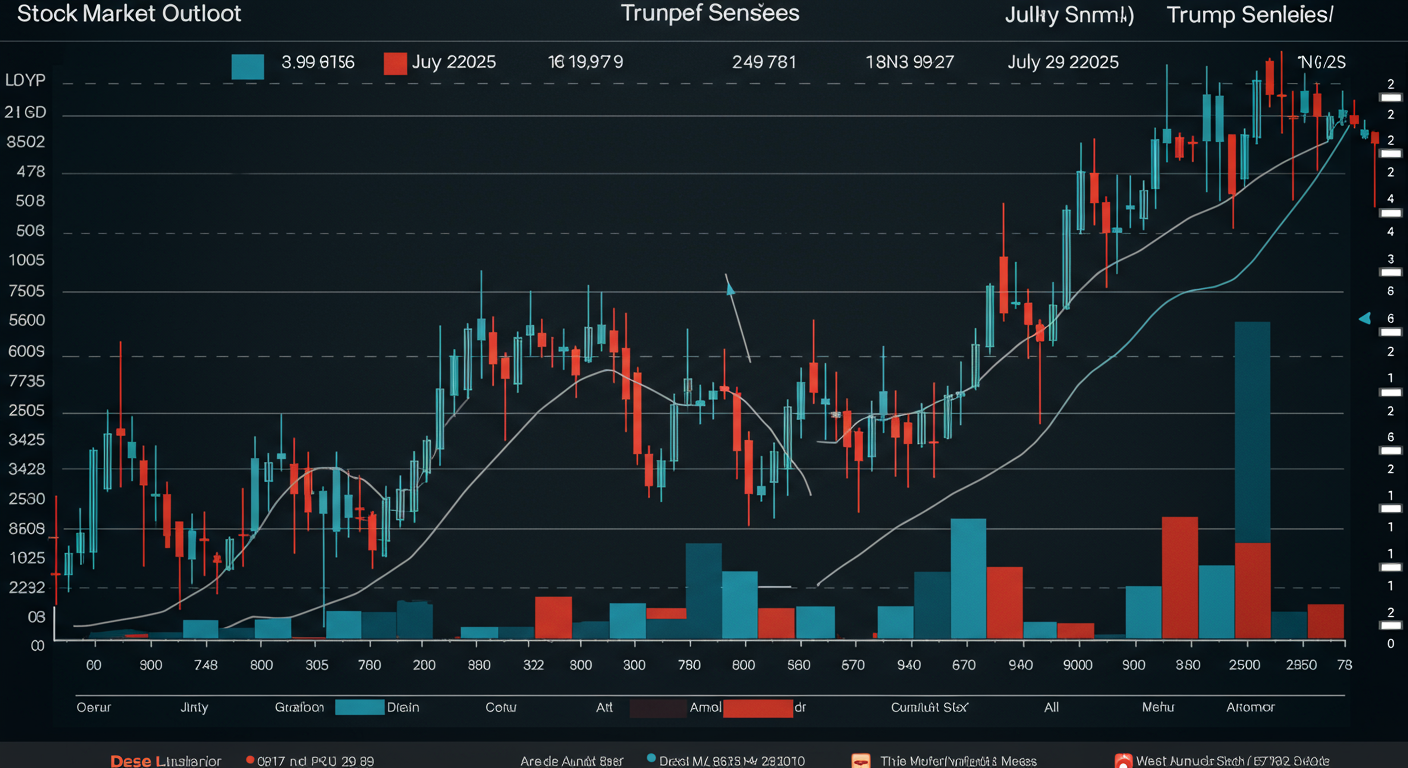Ever wondered what goes on behind the scenes of those big corporate announcements? Every few months, major companies pull back the curtain on their performance, revealing their financial “report cards” through what are called quarterly earnings. These aren’t just dry numbers for financial experts; they offer a fascinating glimpse into the health of our economy, the trends shaping industries, and even what might be coming next for the products and services we use every day.
On July 17th, several prominent Indian companies, from tech giants to banking stalwarts and tyre manufacturers, released their Q1 (April-June) results for the financial year 2023-24. Think of it as a midway check-up for their annual goals. Let’s unwrap these reports together and understand what these numbers really mean for us, the everyday consumers and observers of the economic landscape.
What Are Quarterly Earnings, Anyway?
In simple terms, quarterly earnings are detailed financial reports released by publicly traded companies every three months. They outline how much money the company made (revenue), how much profit they kept (net profit), their expenses, and other crucial financial metrics. These reports are vital because they show investors, analysts, and the general public how well a company is performing. Are they growing? Are they facing challenges? Are they managing their money wisely? These reports provide the answers.
For a layperson, these reports help us understand the bigger economic picture. Strong earnings across multiple sectors often signal a robust economy, while weaker results might point to challenges or slowdowns. They can also influence share prices, which in turn can affect mutual funds and pensions, making them indirectly relevant to almost everyone.
July 17th: A Mixed Bag of Results
The earnings reports released on July 17th presented a varied picture, reflecting the diverse challenges and opportunities different sectors are currently experiencing. Some companies celebrated significant growth and strong performance, while others navigated headwinds, showing a dip in profits despite revenue growth. Let’s dive into the specifics of what each company reported.
LTIMindtree: Strong Deal Wins Amidst Integration
LTIMindtree, the merged IT services entity, announced a 4.2% year-on-year (YoY) increase in its net profit for Q1, reaching Rs 1,152.3 crore. Their revenue also saw a healthy jump of 13.8% YoY, touching Rs 8,702.1 crore. This growth is quite commendable, especially when considering the ongoing integration challenges of two large companies.
What truly stood out for LTIMindtree was their highest-ever deal wins as a combined entity, securing projects worth $1.41 billion. This indicates a strong demand for their services and a positive outlook for future revenue. The company’s CEO emphasized their focus on profitable growth and cost efficiencies, alongside smooth integration. However, like many in the IT sector, LTIMindtree faced the challenge of high attrition, with 17.8% of their workforce leaving, reflecting the competitive talent market and the impact of the broader economic slowdown.
Wipro: A Cautious Outlook Despite Solid Deals
Wipro, another IT services giant, reported a 12% YoY decline in its Q1 net profit, settling at Rs 2,870.1 crore. While profit dipped, their revenue grew by 6% YoY to Rs 22,831 crore. This suggests that while they are bringing in more business, profitability might be under pressure due to various factors like higher operational costs or competitive pricing.
Despite the profit dip, Wipro’s CEO described it as a “solid first quarter,” highlighting strong deal wins totaling $1.2 billion in total contract value. A positive sign was the continued moderation in attrition for the sixth consecutive quarter, indicating better employee retention. However, their outlook for Q2 FY24 was cautious, projecting IT Services revenue to be between $2,737 million to $2,785 million, which implies a slight sequential de-growth. This cautious forecast reflects the prevailing uncertainties in the global technology spending environment.
Axis Bank: Robust Growth and Improving Asset Quality
Axis Bank delivered impressive Q1 results, reporting a substantial 41% rise in its net profit YoY, reaching Rs 5,797 crore. This is a significant jump from Rs 4,125 crore in the same quarter last year. Their Net Interest Income (NII), which is the core earnings from their lending activities, also grew robustly by 27% YoY to Rs 11,959 crore.
What’s even more encouraging is the improvement in their asset quality. Gross Non-Performing Assets (NPAs), essentially bad loans, decreased to 1.96% from 2.02% quarter-on-quarter, and Net NPAs improved to 0.40% from 0.44%. This indicates that the bank is managing its risks well and has a healthier loan book, which is a very positive sign for its long-term stability and profitability.
Jio Financial Services: The Exciting Spinoff
While not a traditional earnings report, July 17th also brought significant news for Jio Financial Services (JFS). As a spinoff from Reliance Industries, JFS received approval from the National Company Law Tribunal (NCLT) for its demerger. This means JFS will soon be listed as a separate entity on stock exchanges, with a record date for share allocation set as July 20th.
This development is highly anticipated because it’s expected to unlock significant value for Reliance shareholders and create a new major player in India’s booming financial services sector. Jio Financial Services aims to leverage Reliance’s massive customer base and digital infrastructure to offer a wide range of financial products, potentially disrupting the market. While its financial results are yet to come, its impending listing itself was a major highlight of the day.
CEAT: A Tyre-rific Turnaround Story
CEAT, the prominent tyre manufacturer, showcased a remarkable turnaround in its Q1 performance. They reported a net profit of Rs 123 crore, a huge improvement compared to a loss of Rs 9.3 crore in the same period last year. Their revenue from operations also saw a modest increase of 4.7% to Rs 2,935 crore.
A key indicator of their improved health is the EBITDA margin, which expanded significantly to 12.3% from 7.4% YoY. This indicates better operational efficiency and profitability. The positive results were driven by strong demand in the replacement market (people buying new tyres for existing vehicles) and more stable raw material prices, which helped boost their margins. It’s a classic example of how a company can bounce back with favorable market conditions and good management.
Tata Communications: Data Business Drives Growth
Tata Communications, a global digital ecosystem enabler, reported a 29% YoY decline in its Q1 net profit, reaching Rs 321 crore. However, this dip in profit came alongside a healthy 10.7% YoY increase in revenue, which stood at Rs 4,772 crore. The disparity often points to increased operational costs, investments, or changes in business mix.
The bright spot for Tata Communications was its data business, which demonstrated robust growth with a 14.3% YoY revenue increase to Rs 3,962 crore. The CEO highlighted this strong performance in their data segment, emphasizing the company’s ongoing transformation journey and its focus on future growth areas. This shows a strategic shift and investment in high-growth digital services, even if it impacts short-term profits.
Why Do These Numbers Matter to YOU?
You might be thinking, “These are big companies and big numbers, but how does this affect me?” Well, quarterly earnings are like the vital signs of the economy. When companies like these perform well, it often translates into more jobs, more investment, and a general sense of economic stability. For instance, strong banking results from Axis Bank suggest a healthy credit environment, which can benefit businesses looking for loans or individuals seeking mortgages.
Similarly, the performance of IT companies like LTIMindtree and Wipro reflects the health of the global tech industry and India’s position in it. A turnaround for a company like CEAT indicates consumer spending on essentials and the health of the automotive sector. Even the demerger of Jio Financial Services signals new avenues for financial services, potentially leading to more competitive offerings for consumers.
Looking Ahead
The Q1 results of July 17th paint a picture of resilience and adaptability across various sectors. While some companies faced profitability challenges, their underlying revenue growth and strategic initiatives suggest a forward-looking approach. The strong deal wins in IT, improving asset quality in banking, and remarkable turnarounds in manufacturing indicate that Indian businesses are actively navigating the current economic climate, seeking growth opportunities, and focusing on efficiency.
As we move further into the financial year, the performance of these bellwether companies will continue to be a key indicator of the broader economic trajectory. Keeping an eye on these financial report cards helps us all stay informed about the pulse of the economy and the trends that might shape our future.









